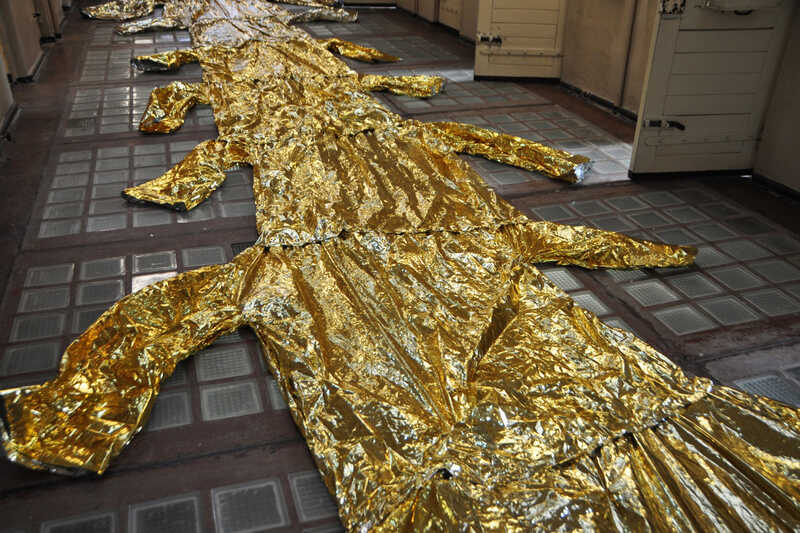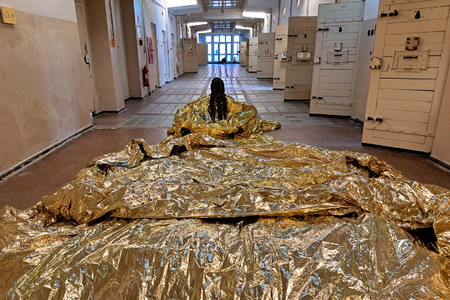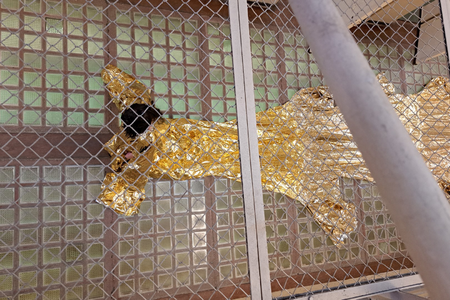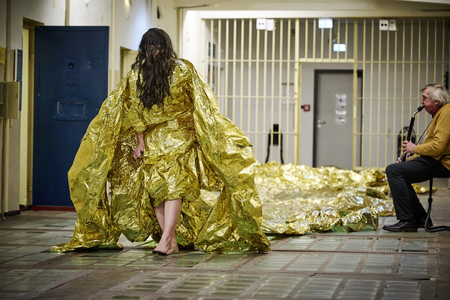Chapter 3: The River – My Personal Journey Through Pain and Hope
Performance: Lydia Klammer / Music: Theo Jörgensmann
Fotos 4/9/10/11 Thomas Häntzschel
This chapter moves me the most, for it was shaped by a place that confronted me, inescapably, with Germany’s past. Originally, the river was a flowing stream of emergency blankets—a symbol of humanity caught in a cycle, forever threatened by inhumanity. But as I stepped into the former Stasi detention center, the river transformed. It became a Via Dolorosa—a path of suffering.
THE RIVER stands as a tribute to all those who suffered under systems of oppression—those who were tortured, broken, murdered. It remains, a silent witness to both past and present. Yet for me, it is also a symbol of hope: Humanity can be destroyed, but it will always rise again.
Why This Exhibition is Personal
I cannot speak of this work without revealing my own connection to it. Many of the images and scenes were born from personal experience. They are shaped by places I have visited, stories that have touched me, moments that have burned themselves into my consciousness.
Many times, as I worked on this exhibition, I was overwhelmed by the weight of memory—the echoes of suffering, the depths of human resilience. I thought of all those, past and present, who are silenced, stripped of their freedom, erased from history.
This exhibition is my response to the question: How do we confront destruction and division?
At a time when authoritarian forces are once again growing louder, when human dignity is once again being questioned, I refuse to remain silent.
Art, for me, is also resistance.
It gives us a voice when words fail in the face of rising brutality.
THE RIVER reminds us that humanity is not a given. It is a choice—one we must make, again and again.
Through our actions, through our art, through our defiance.
THE RIVER. III / 2025
Factsheet
- Material
- Mixed Media, Movement, Sound, Others, Aluminum
- Style
- Installation, Public Art, Performance, Monumental
- Theme
- Society










